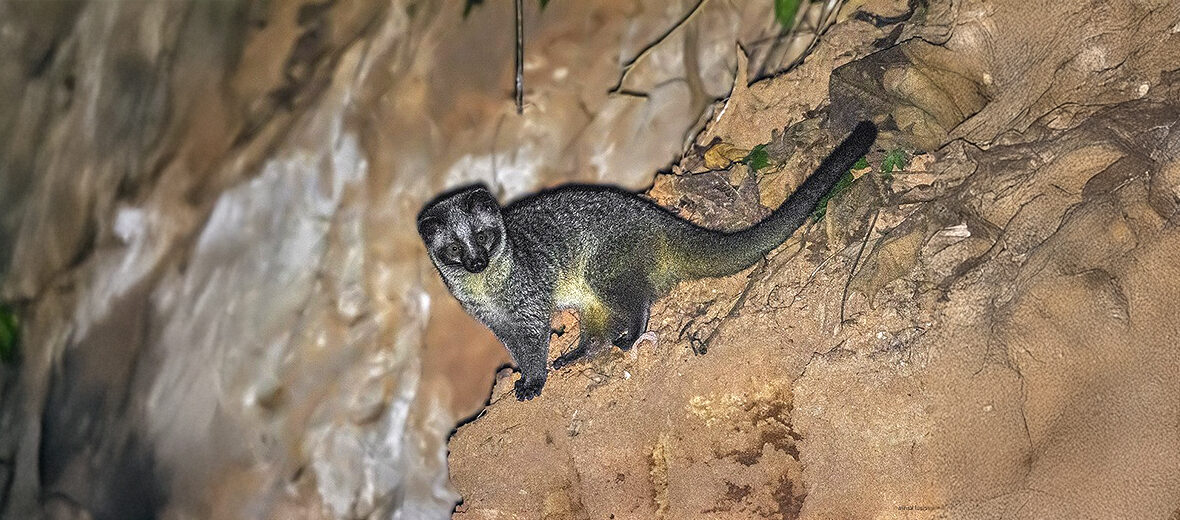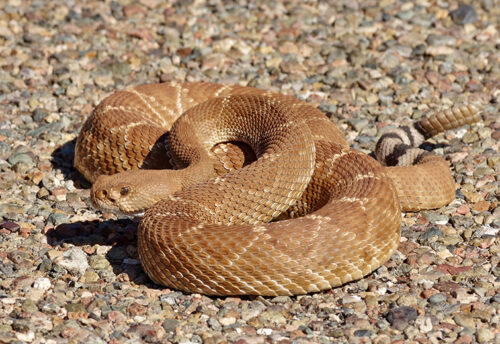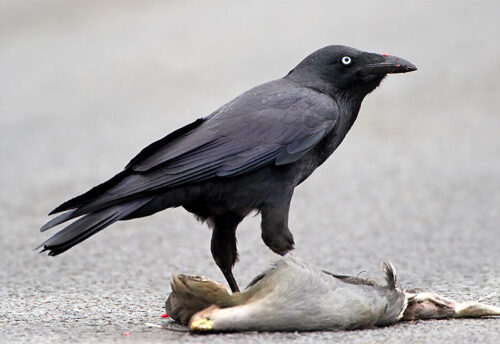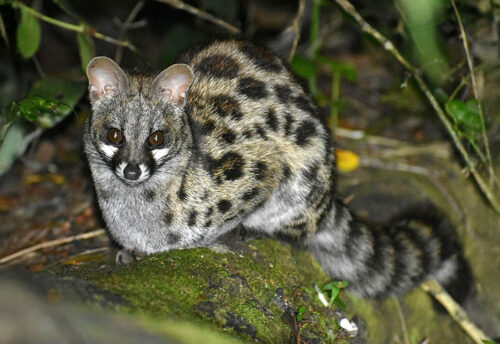
The masked palm civet, aka gem-faced civet, can be found among the evergreen and deciduous forests, mountainous regions, rainforests, and even human settlements. They reside in the Indian Subcontinent, Bhutan, Bangladesh, Myanmar, Peninsular Malaysia, Laos, Cambodia, Vietnam, Thailand, China, Japan, Borneo, Sumatra, Taiwan, Andaman island, and Nicobar island. Even though they face the threats of habitat destruction, at the hands of dams, residential and commercial development, and agriculture; vehicle strike (being hit by vehicles); hunting and trapping; these critters are still listed as Least Concern by the IUCN.
First the Stats…
Scientific name: Paguma larvata
Weight: Up to 9.5 lbs.
Length: Up to 2.1 feet, plus up to a 25 inch tail
Lifespan: Up to 20 years
Now on to the Facts!
1.) Masked palm civets are nocturnal (active at night).
2.) These critters are solitary and only come together to mate.
3.) They are primarily arboreal (spend their lives in trees).
4.) Gem-faced civets build a bed or nest in trees, each night.
5.) Being omnivores (eat plant and animal matter), these critters prey on rats, mice, birds, mollusks, frogs, snakes, and a variety of arthropods. Figs, bananas, mangoes, and leaves are also consumed.
But wait, there’s more on the masked palm civet!
6.) Masked palm civets are polygynandrous (males and females mate with multiple partners).
7.) Breeding takes place in early spring to late autumn.
Did you know…?
When startled or threatened, they will spray their attacker with a strong smelling musk, similar to that of a skunk.
8.) Females undergo up to a 60 day gestation (pregnancy) that yields up to 4 pups.
9.) The masked palm civet is an important seed disperser, as they pass seeds to different areas, from the fruits they eat. This contributes to the growth of the surrounding forests.
10.) Tigers, hawks, crocodiles, and leopards all prey on these civets. Plus, humans eat their meat in Vietnam and China.
Now a Short Masked Palm Civet Video!
Be sure to share & comment below! Also, check out the Critter Science YouTube channel. Videos added regularly!

Want to suggest a critter for me to write about? Let me know here.
Some source material acquired from: Wikipedia & IUCN
Photo credit: Rejaul karim.rk



